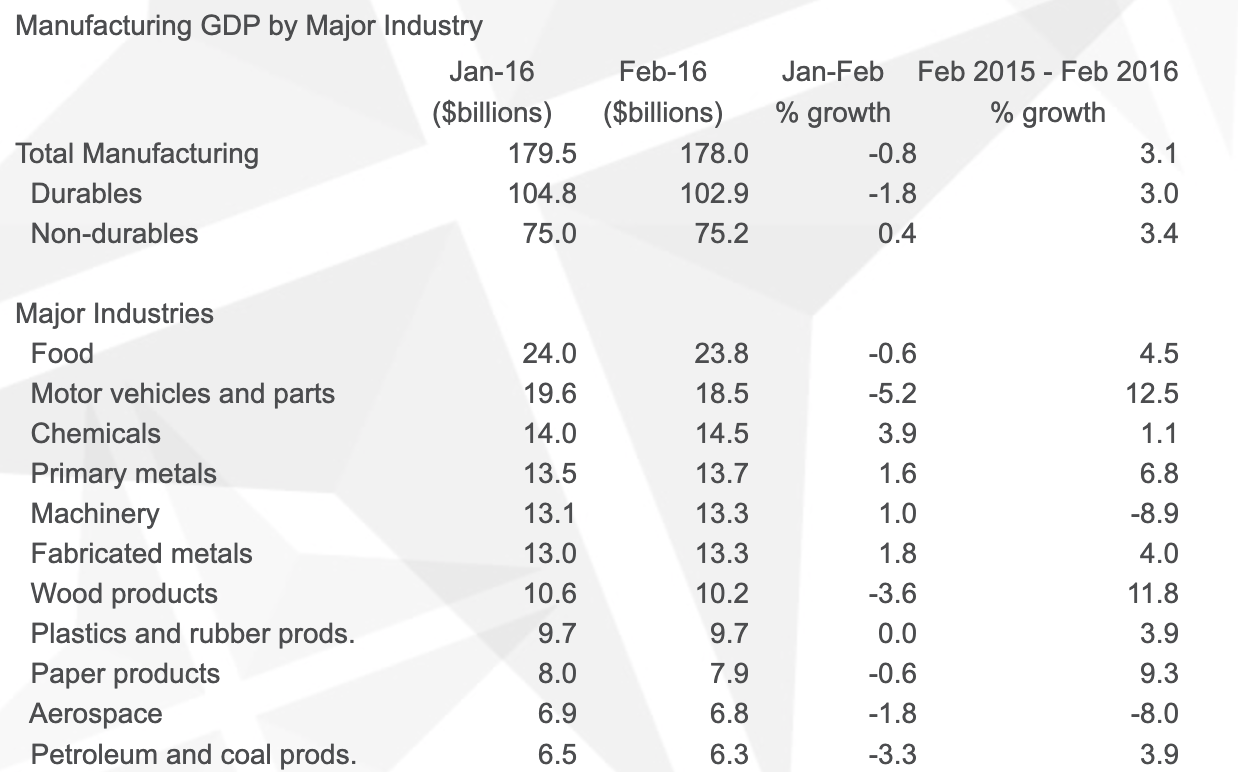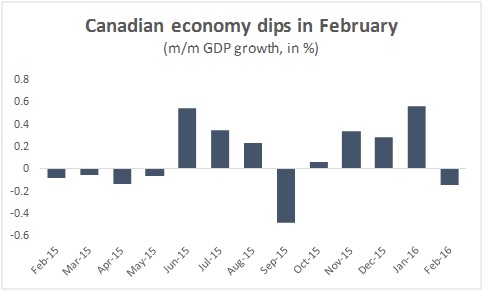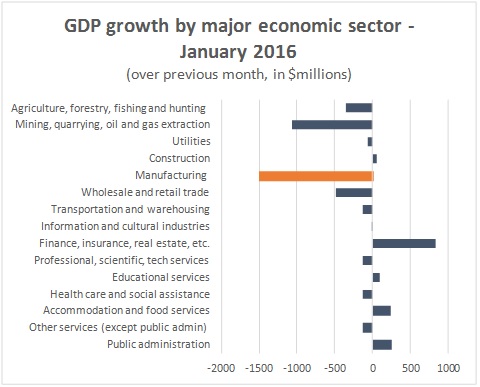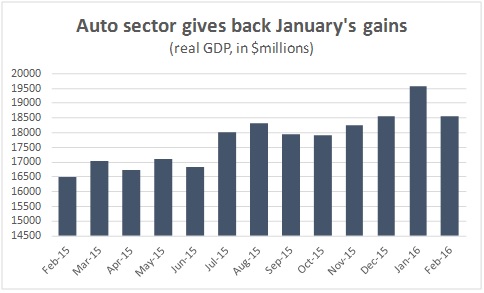Canadian economy falters after January’s surge
After opening 2016 with its best monthly performance in years, the Canadian economy took a step back in February, posting its first monthly decline since September. Overall GDP fell by 0.15 per cent, taking some of the wind out of Canada’s economic sails after a 0.57 per cent surge in January (that increase was revised downward slightly from 0.63 per cent).

February’s decline in GDP was not much of a surprise given a number of dismal results in other economic indicators for the month. Earlier releases had shown that manufacturing sales fell by 3.3 per cent in February, while exports had plunged 5.4 per cent. In that context, the only real surprise was that the decline in GDP was as small as it was.
Losses were relatively widespread, as 10 of the 15 major economic sectors in the country saw value-added output contract in February. The decline was strongest in goods-producing industries as GDP in agriculture and forestry fell by 1.3 per cent, while manufacturing, as well as mining and energy extraction, declined by 0.8 per cent.

Accommodation and food services was the only sector to record solid growth in February, with GDP rising by 0.7 per cent. There were also modest gains in the public service, finance-related industries, education and construction.
For its part, the manufacturing sector’s decline in February came after it recorded two consecutive months of exceptional gains. As a result, even with the 0.8 per cent drop, overall GDP in manufacturing was still at its second-highest monthly level since August 2008 and 3.1 per cent higher than it was a year earlier.

The decline in manufacturing was concentrated in the motor vehicles and parts industries, where GDP fell by 5.2 per cent. The good news is that this decline essentially wipes out the impact of a similar-sized increase in January. As a result, auto sector GDP in February was still at about the same level as in December, which at the time was the best month for that sector in years. In fact, through the first two months of 2016, GDP in motor vehicles and parts is 12.6 per cent higher than it was over the same period last year.
In addition to motor vehicles and parts, there was a notable decline in GDP in wood products (-3.6 per cent) and petroleum refining (-3.3 per cent). Food producers also saw real output decline after a record-setting January.
However, there was good news as well in manufacturing in February. A jump in pharmaceutical output helped the chemicals sub-sector record a 3.9 per cent increase in GDP, while output was higher for producers of machinery and of primary and fabricated metals.
